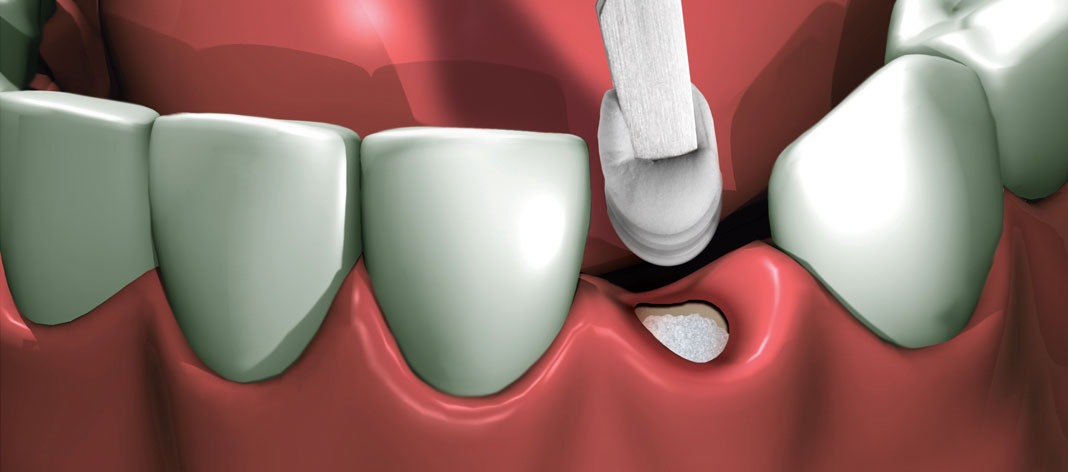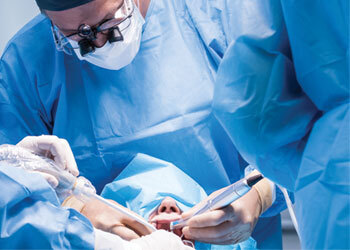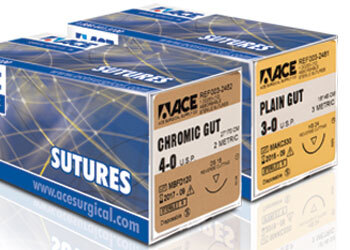Socket Preservation Simplified: A Reliable Solution for Post-Extraction Wound Care

As dental surgical specialists, you understand that the success of post-extraction healing is not just about managing soft tissue but also preserving the structure of the alveolar ridge. Without this, the natural bone resorption process can compromise both the aesthetic and functional outcomes of future restorative procedures. Socket preservation is a critical step in ensuring that the extraction site remains viable for future procedures, and using the right products is essential for promoting optimal healing.
When a tooth is extracted, the body begins a natural process of bone resorption. This bone loss can occur quickly, starting within the first few months after extraction, and can significantly affect future restorative treatments like implants. Socket preservation is essential for:
- Preventing alveolar ridge resorption: Immediate preservation of the socket can help maintain bone volume and prevent the loss of valuable bone tissue.
- Supporting future restorative procedures: By stabilizing the socket, socket preservation creates an ideal environment for future implants or other restorative work.
- Enhancing functional and aesthetic outcomes: Proper socket preservation ensures that the healing process is smooth, with minimal bone loss, improving the overall results of future treatments.
However, socket preservation is not without its challenges. Without the right materials, bone loss, soft tissue complications, and prolonged healing can hinder the success of the procedure.
The primary challenge in socket preservation is preventing bone loss in the first few months after tooth extraction. Without the proper scaffold to guide the healing process, the body’s natural tendency is to resorb bone, which can make future implant placement difficult or even impossible. Additionally, complications such as soft tissue irritation and improper clot formation can slow the healing process, leaving the site vulnerable to infection or delayed recovery.
Resorbable Collagen Plugs (RCP)are designed to address the critical role of soft tissue healing in the post-extraction socket. Soft tissue stability is just as important as bone regeneration when it comes to socket preservation. The RCP is crafted from collagen, which is known for its natural ability to stabilize the wound, control bleeding, and support healing. When used in conjunction with bone graft material, RCP is excellent for socket preservation.
- Hemostatic properties: Collagen’s intrinsic hemostatic qualities help control minor bleeding at the surgical site.
- Soft tissue support: The plug assists in wound healing by protecting the socket and stabilizing the soft tissue, allowing for proper tissue regeneration without the need for additional bone grafting.
- Easy to use: The RCP plug is cut to size and compressed into place, where it provides a stable environment to promote healing.
- Sterile and resorbable: As a fully resorbable material, RCP is ideal for oral wounds, particularly extraction sockets, where it dissolves naturally over time.
By using RCP, you create an environment that minimizes bleeding, reduces the risk of infection, and accelerates soft tissue healing, which in turn supports a healthier, more predictable healing process for your patients.
For cases where bone preservation is a primary concern, the NuOss Plugis an ideal solution. The NuOss Plug combines xenograft granules with a collagen matrix, creating a scaffold that helps guide natural bone regeneration. This plug is designed to protect the extraction site from particulate migration, a common challenge when using traditional bone grafts, and promotes the regeneration of the alveolar ridge for future implant placement.
- Bone regeneration support: The collagen matrix promotes natural bone healing and regeneration, preventing bone loss and supporting the future placement of dental implants.
- Prevents particulate migration: The combination of xenograft and collagen ensures stability at the site, avoiding the movement of graft particles that can complicate healing.
- Predictable outcomes: NuOss Plug provides a stable and predictable scaffold, which helps ensure reliable bone remodeling and supports the future success of implants.
By incorporating NuOss Plug into your socket preservation procedures, you create a robust environment for bone regeneration, helping to ensure that the site remains stable and well-prepared for future restorative work.
When it comes to socket preservation, both RCP and NuOss Plug offer benefits that support the healing of both soft tissues and bone. While RCP focuses on soft tissue stabilization and hemostasis, NuOss Plug provides a stable matrix for bone regeneration, ensuring that the socket remains intact and ready for future restorative treatments.
Whether you are managing a simple extraction or preparing a site for future implants, these tools are designed to help you deliver predictable, reliable results.
For more information on RCP and NuOss Plug, visit our website to explore how these products can enhance your socket preservation techniques.



